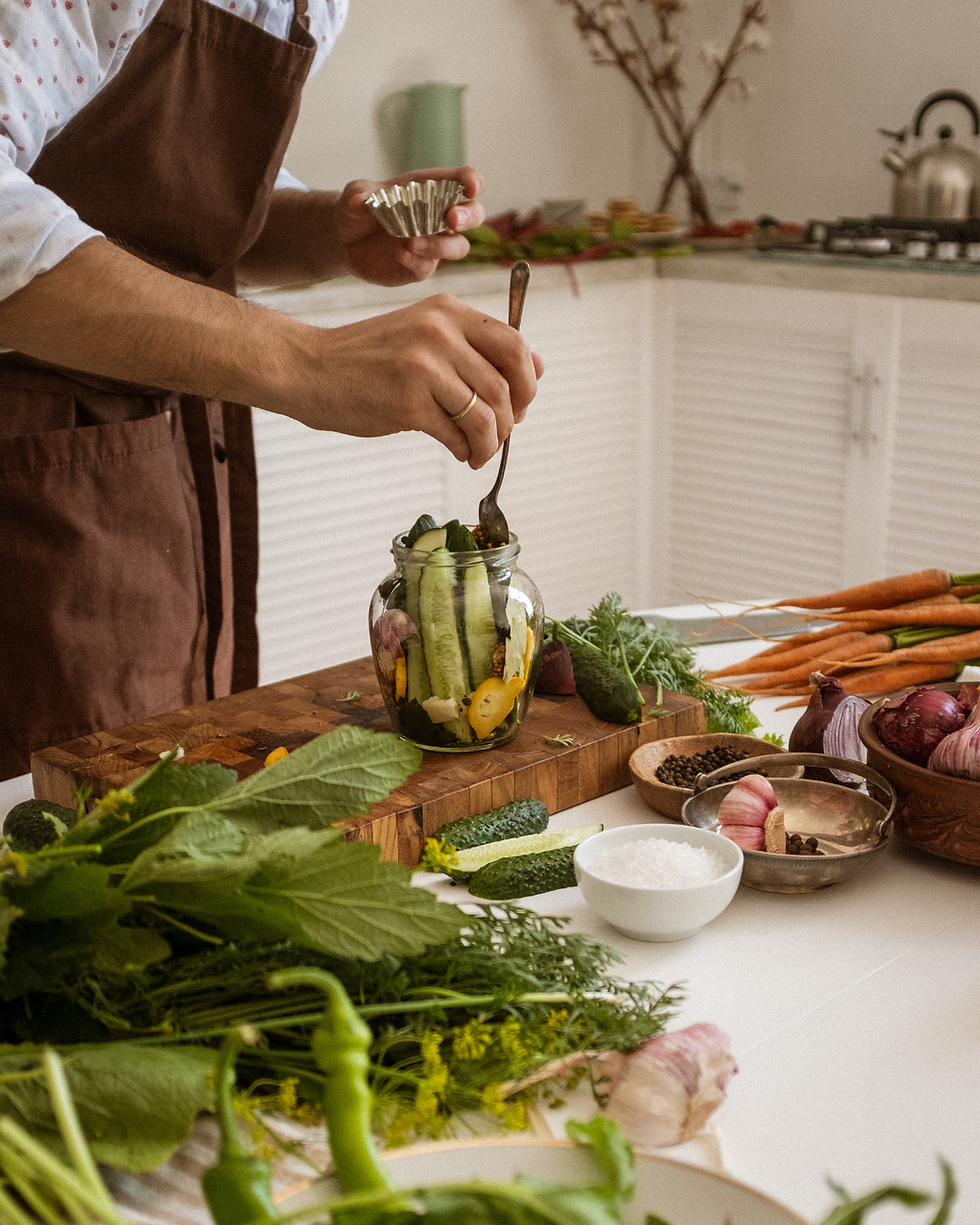Cycle food - for hormone balance
- jana_noel

- Apr 29, 2023
- 4 min read
Updated: Jun 13, 2023

Have you ever noticed that your cravings and hunger pangs change during your cycle?
That's completely normal! Even if you ate the same foods and exercised the same amount every day, your body would burn different amounts of calories. This is solely due to your menstrual cycle and the hormones that are involved in it.
They ensure that you burn fewer calories during your follicular and ovulation phase - the time after your period until your ovulation - than after your ovulation.
Cycle food can be a good guide to best support the changing needs of the female body.
This article will give you a guide to better understand your female body and its processes. I will show you which foods can support the individual cycle phases, which can prevent possible complaints.
Menstruation:
During the "inner winter", the body loses many nutrients due to the monthly bleeding. Iron deficiency is most common in women, which is why it makes sense to have your blood levels checked regularly and to eat iron-rich foods (especially during your period). Iron-rich foods include nuts, green vegetables and red berries. To improve iron absorption, you can make sure that vitamin C is included with the iron-rich foods. This will allow the iron to be better absorbed. For example, you could add beet and a squeeze of lemon juice to your hummus. Caffeine, on the other hand, inhibits iron absorption. For this reason, caffeine should not be consumed with iron-rich foods.

Magnesium also plays a central role during bleeding, as this mineral can reduce cramps and thus also frequent menstrual cramps. Sources of magnesium include banana, cocoa, sesame or sunflower seeds.
From the point of view of Ayurveda, warm foods can be very supportive during the period, as they have a warming, decramping effect. Our body temperature is lowered and therefore warming curries, stews or soups can help our digestion. During this time of the cycle, you should avoid alcohol, caffeine and fatty fast food, because all of these can aggravate the possible discomfort during your period.
Follicular phase:
Comparable to spring in nature, the body is also in a kind of build-up phase. After bleeding, the endometrium is built up again and the growth of the follicle now has priority.

With sufficient vegetable protein and fat sources, we can perfectly support our body in building the uterine lining and egg maturation. Wonderful sources of protein include seeds such as flaxseed, seeds, nuts, soy products and quinoa.
Probiotic foods are also good during this phase of the cycle, as they support the increase of estrogen and FSH and also build up our intestinal flora well. Fermented foods such as yogurt, kimchi or sauerkraut perfectly prepare your intestinal flora for ovulation and the associated hormone surge.
In addition, bitter food can be used to help the liver and thus support the breakdown of hormones and toxins. This works very well with foods such as dandelion and chicory. This applies to the first and second cycle phase. So-called phytoestrogens, which are similar in structure and function to an effective natural form of estrogen, are found, for example, in soybeans, flaxseed, cruciferous vegetables - also called cabbage vegetables (cauliflower, broccoli,...), onion and garlic.
Ovulation:
Estrogen levels peak during this phase and eventually cause ovulation. In your "inner summer" you have especially much power and you need less energy-rich food.

Low-calorie vegetables, raw vegetable salads, smoothies and juices are good during the ovulation period. On the one hand, these colorful foods contain many antioxidants, and on the other hand, raw fruits and vegetables can usually be digested better than usual during this time, as the body temperature rises.
Fiber is especially important right now! Fiber ensures that excess estrogen can be expelled from the body, which perfectly prepares the female body for the next phase of the cycle.
If you occasionally drink a cup of coffee or a glass of wine, then the ovulation phase is best suited for this ;)
Lutealphase:
The luteal phase can also be called the inner autumn, hormone levels drop and often you feel the need to withdraw.

In addition, this phase often contributes to a change in eating behavior. We have an increased appetite and cravings. Vegetables rich in starch, such as potatoes, parsnips or pumpkin, keep you full for a long time and prevent cravings. Above all, regular and balanced meals are the key to stable blood sugar levels and fewer cravings!
We often intuitively reach for magnesium-rich foods such as dark chocolate. Cocoa is considered a super source of magnesium and also promotes our happiness hormone serotonin, which boosts our mood. If we want to support our nervous system, we can additionally pay attention to foods rich in B vitamins. These are contained, for example, in millet and oatmeal.
Inappropriate is the excessive consumption of sugar and salt, as they promote fluid retention in the body. Alcohol also upsets the hormonal system and can cause menstrual cramps or make them worse.
Closing words
The cyclical diet is not meant to restrict you - on the contrary, it is meant to inspire you to integrate a balanced and varied diet and to strengthen your body sensibility. In the end, all the knowledge is already within us and our task is to find our way back to this intuitive healthy eating.
Ask yourself what your body craves in the different phases of the cycle and what tastes best to you and when, in order to train your body sensation.
If you want to go deeper into the cyclical diet or are looking for a diet that suits you, I will be happy to support you!
with love
Jana Noel 🤍



Comments